The Curse of Oak Island- Season 8, Episode 4: Alignment
The following is a plot summary and analysis of Season 8, Episode 4 of the History Channel’s TV series The Curse of Oak Island.
[SPOILER ALERT!!!]
Plot Summary
The Lagina brothers and Doug Crowell meet with archaeologists Laird Niven, David MacInnes, Aaron Taylor, and Liz Michels at the stone structure on Lot 15. MacInnes informs the treasure hunters that the archaeological trench which he and his associates have been labouring on has reached glacial till, and that there is no more of the structure left to excavate. MacInnes affirms his belief that the structure constitutes the remains of a pine tar kiln, and declares that he has sent a piece of charcoal he unearthed during the excavation for carbon dating. The narrator then informs us that the treasure hunters plan to conduct “deep earth scans” in the vicinity and subject the area surrounding the structure to an extensive archaeological excavation, but that they will first need to acquire the requisite permits.
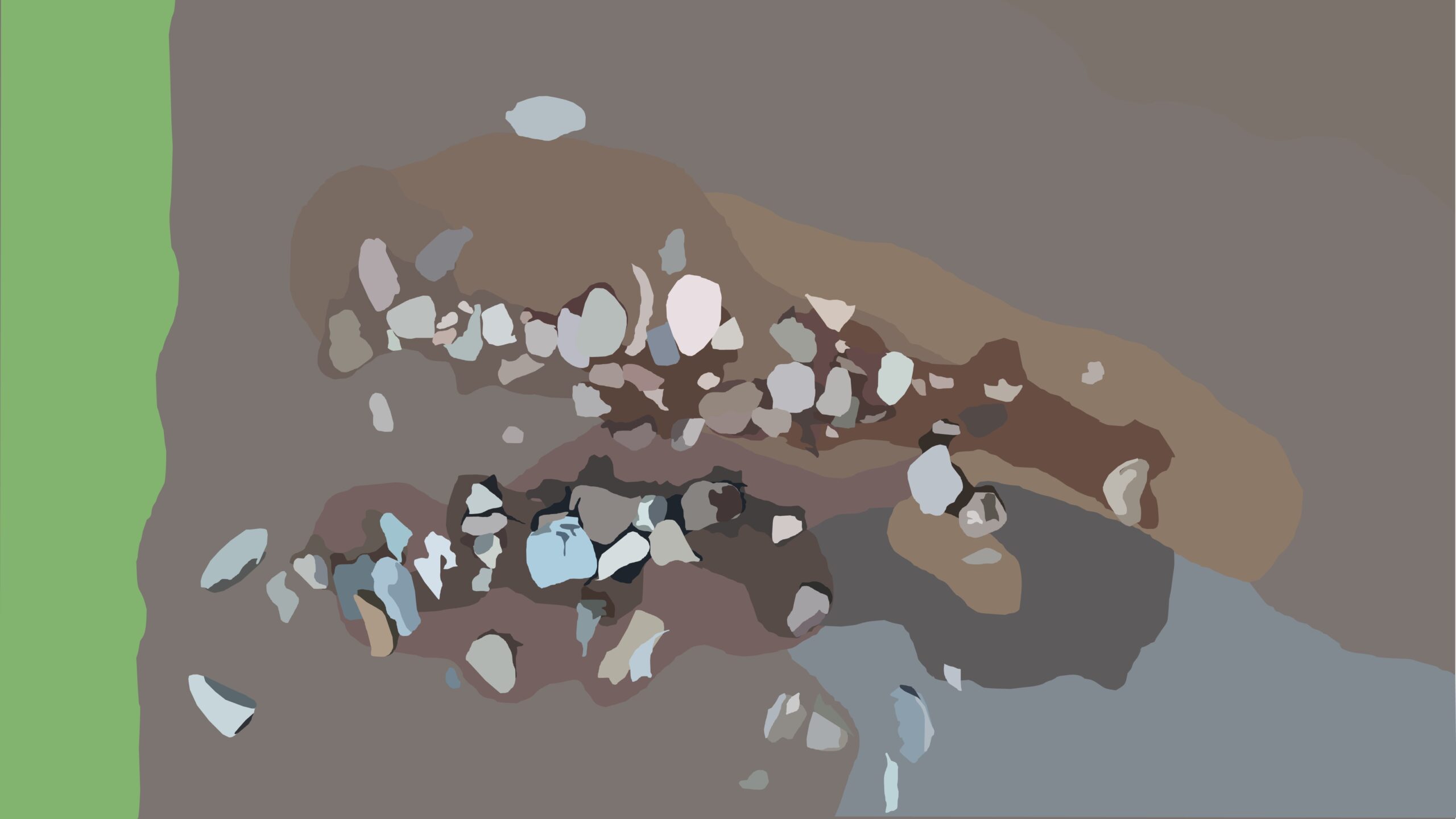
Later that morning, Rick, Marty, and Alex Lagina meet in the War Room to Skype with Craig Tester and David Irving of Irving Equipment Ltd. Marty expresses his opinion that the crew has run out of time to sink any major caissons in the Money Pit area that season due to the delays resultant of the pandemic. Craig Tester then reveals that the team plans to hire Choice Drilling to conduct a drilling operation on the island that season, which he hopes will help the crew more accurately identify the areas at which they’d like to sink shafts in the future.
The subject of the Big Dig- an enormous hypothetical excavation of the Money Pit area- is introduced during the conversation. Marty Lagina hints that this massive operation may commence next year.

Meanwhile, Gary Drayton and Peter Fornetti do some metal detecting on Oak Island’s Lot 32, near the southwestern corner of the swamp. Drayton quickly unearths the hand-forged head of an old single-bit axe, which he suggests is very similar to the rigging axe head he and Jack Begley found on Lot 15 in the Season 8 premiere. Shortly thereafter, the treasure hunters find another axe head nearby, which is nearly identical to the other. In a later interview, Drayton states his belief that these Lot 32 axe heads are likely the same age as the artifacts recently discovered on Lot 15, the latter being the aforementioned axe head, the coin with the square hole, and the ox shoes found the previous episode. Drayton and Fornetti continue their metal detecting operation and find a third single-bit axe head. The British metal detection expert suggests that the profusion of axe heads in such a small area could indicate the place was once the site of some sort of work camp.

The treasure hunters call up Laird Niven and inform him of their recent finds, suspecting that they have stumbled upon another site of archaeological significance similar to the ruins of the suspected tar kiln on Lot 15. The archaeologist meets up with Drayton and Fornetti and examines the axe heads. He states that the artifacts “certainly aren’t modern”, and identifies them as forest axes used for light work such as cutting limbs off trees.
Later, the Oak Island team congregates in the War Room to Skype with theorists Corjan Mol and Chris Morford, who presented their Oak Island theory in Season 7, Episodes 8 and 9. After the narrator briefly summarizes the theory which Mol and Morford presented last year, the theorists show the treasure hunters a map of Oak Island on which Nicolas Poussin’s painting The Shepherds of Arcadia is superimposed, its top corners lying at the centre and bottommost boulder of Nolan’s Cross, respectively. In this diagram, which Mol and Morford presented during their previous Oak Island visit, the Eye of the Swamp lies at the forehead of the shepherdess in the painting. During their previous presentation, Mol and Morford explained their belief that the shepherdess’s forehead holds special significance because it lies at the centre of a pentagram around which the painting appears to be modeled, and because a similar-looking woman who sits in the background of Poussin’s self-portrait has a third eye on her forehead, evocative of the Freemasonic All-Seeing Eye.
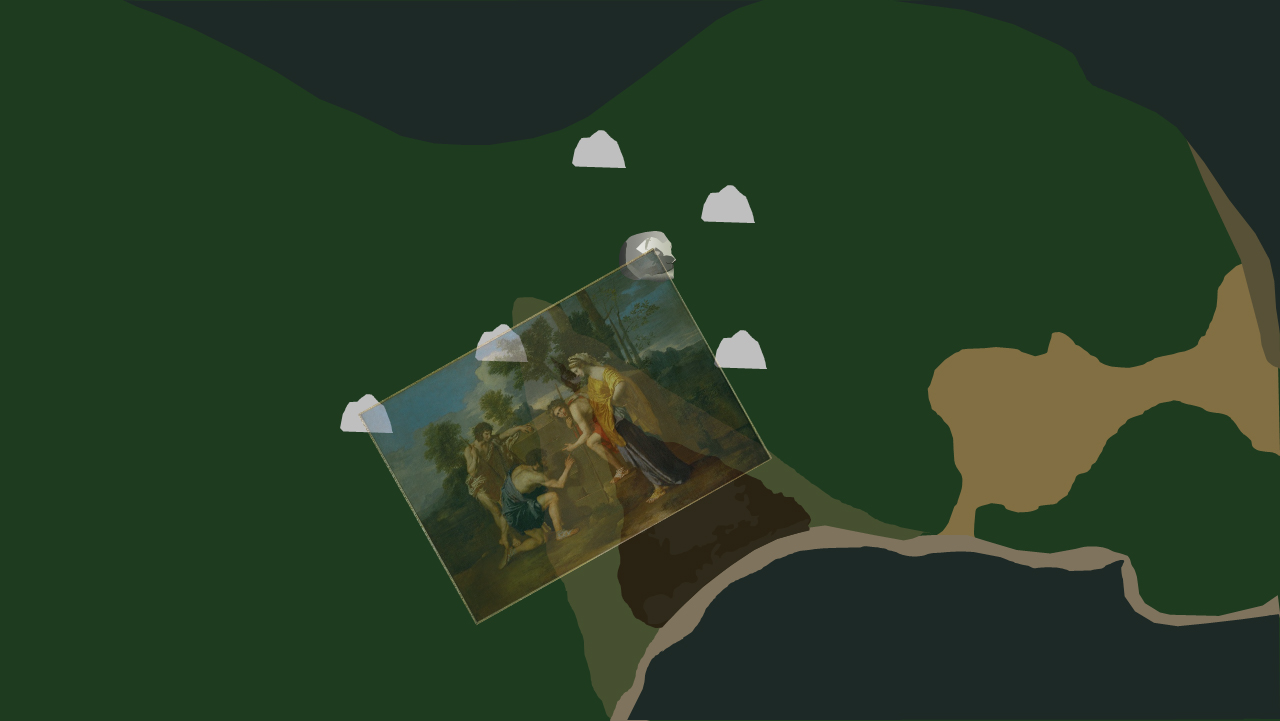
In this episode, Mol and Morford demonstrate that a line drawn along the column of Nolan’s Cross, when extended across the Atlantic Ocean, aligns perfectly with the Royal Way of the Palace of Versailles, the east-west axis of the palace gardens, and the Avenue de Paris beyond. The narrator then informs us that Mol and Morford believe the fabled treasures of the Knights Templar were once stored in the Palace of Versailles, which was built at the behest of the great French King Louis XIV in the 1600s. Next, Mol and Morford make the case that the demesne, or domain, of Versailles was deliberately arranged in the shape of the Menorah, the golden lampstand which illuminated the Holy of Holies in the Temple of Solomon. Finally, the theorists demonstrate that the line connecting Nolan’s Cross with Versailles, when extended beyond the palace, intersects the Temple Mount in Jerusalem, the site on which the Temple of Solomon once stood.

Mol and Morford outline their belief that the Knights Templar recovered the lost treasure of King Solomon from the foundations of Solomon’s Temple, overtop which sat their first headquarters. Centuries later, some mysterious group or individual whose identity is not revealed in this episode ensured that the Palace of Versailles was built in such a way that its east-west axis, when extended southeast, intersected the Temple Mount. Presumably after the palace’s construction, a related group buried the Templar treasure on Oak Island (specifically, Mol believes that two Menorahs, built before and after the destruction of the First Temple in 587 BC, respectively) lies beneath the Oak Island swamp) and created Nolan’s Cross along the line of the meridian established by Versailles’ Royal Way.
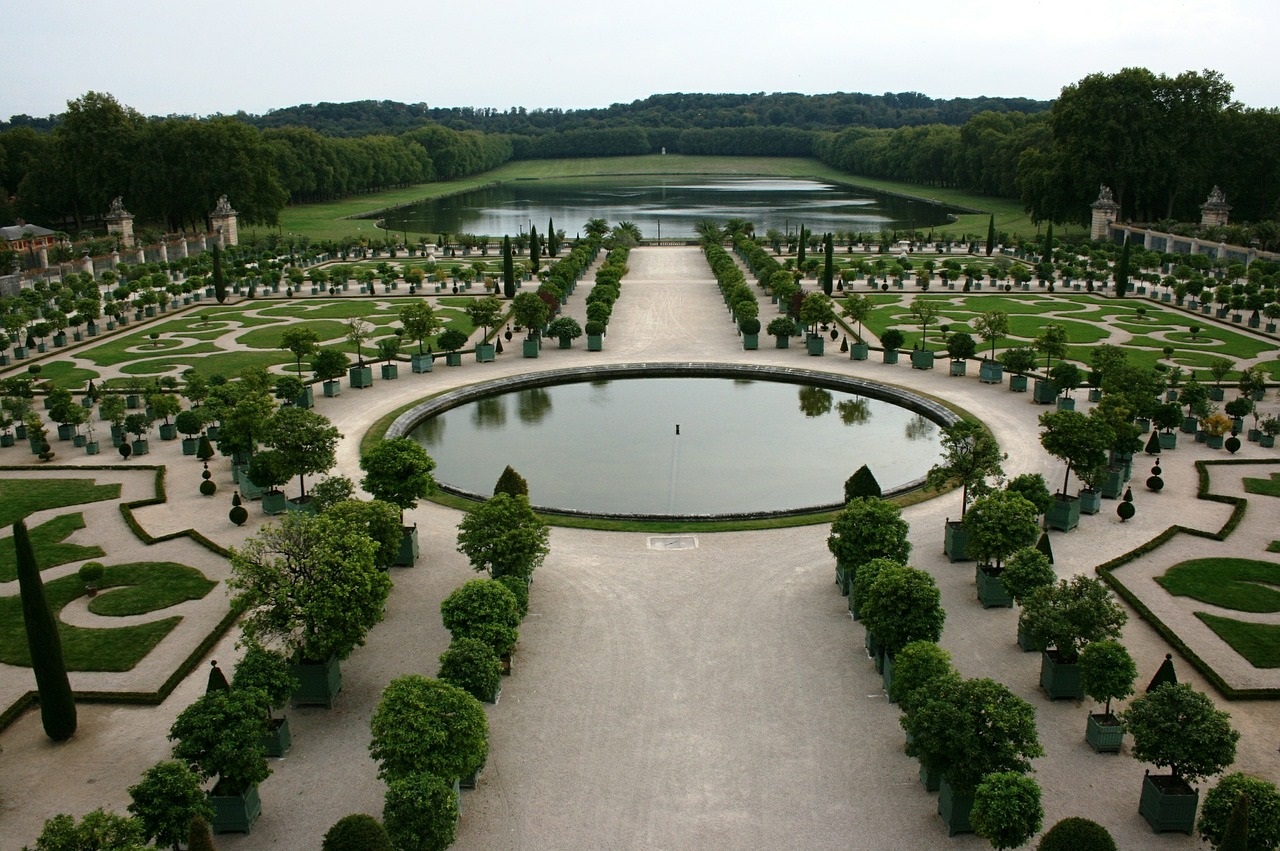
Finally, the theorists prescribe two possible locations at which they believe treasure will lie on Oak Island. They do this by first drawing a perpendicular line from the Eye of the Swamp to Nolan’s Cross. They then draw a circle around the point at which the line intersects Nolan’s Cross, its radius being the length of the line. That accomplished, they draw a second circle around the first circle, its radius being double that of the latter. This second larger circle touches the headstone at the centre of Nolan’s Cross. The theorists then draw a third circle concentric with the first two, its radius being three times the length of that of the first circle. This third circle touches both the uppermost and lowermost boulders of Nolan’s Cross. Morford demonstrates that the southern half of this diagram forms the shape of a seven-armed Menorah when a line drawn from the northern vertex of the swamp to the centre of the swamp’s southern face is added to it. Finally, the theorists draw a pentagram within and bounded by the middle circle, its upper vertex aligning with that of the larger pentagram which was formed when The Shepherds of Arcadia was superimposed over the swamp. The theorists suggest that Oak Island’s treasure can be found at the two bottommost vertices of the smaller pentagram. Following Chris Morford and Corjan Mol’s presentation, the Oak Island treasure hunters agree to conduct excavations at the points of interest they prescribed.

After the War Room meeting, Rick and Marty Lagina, Doug Crowell, Steve Guptill, and Billy Gerhardt head to the western edge of the swamp on Oak Island’s Lot 11 to investigate the first of the two points of interest identified by Chris Morford and Corjan Mol. Guptill, who has determined the sites’ coordinates, leads the treasure hunters to the western point, which proves to be a shallow depression filled with swamp water. Both of the Lagina brothers observe that the spot, at first glance, appears to have been previously dug, and that the large mound sitting next to it speaks of old spoils. The narrator then suggests a possible connection between this feature and the axe heads discovered on Lot 32. The treasure hunters all agree that they ought to investigate this anomaly.
Next, the five men proceed to the second point of interest identified by Mol and Morford, which lies on the border of Lots 12 and 13. In a later interview, Marty Lagina states that the soil at this location “obviously has been disturbed. It looks, from the evidence on the ground, that Fred [Nolan] bulldozed that area to build the peninsula [which extends into the swamp]. Now it’s possible it could be deeper there.” The treasure hunters agree that they ought to excavate this second area as well.
The next day, Doug Crowell, Steve Guptill, and Tom Nolan meet with Dr. Ian Spooner at the anomaly on Lot 11, which the treasure hunters have taken to calling “West Hill”. Equipped with a gravity corer, the geoscientist wades into the water-filled depression and takes a core sample of its bottom. Dr. Spooner observes that the sample contains a significant quantity of sediment (this is later revealed to be 30 centimetres), which he suggests might be an indication that the feature is “older than we think”. Doug Crowell then suggests that, with the permission of Tom Nolan, on whose land the feature is located, they drain the anomaly and clear the brush surrounding it. Nolan agrees to the proposal.
Later that afternoon, various members of the Oak Island team use chainsaws to clear area surrounding the Lot 12-13 feature, which has been dubbed the “East Hill”, of trees and vegetation. That accomplished, Tom Nolan proceeds to excavate the point of interest with a backhoe, unearthing little more than dirt and a large boulder. While attempting to wrest a second boulder from the earth, one of the backhoe’s hydraulic hoses bursts, forcing the treasure hunters to temporarily postpone the operation.
The next day, Steve Guptill, Tom Nolan, and Dr. Ian Spooner meet in the Oak Island Research Centre, where they Skype with Rick and Marty Lagina, Alex Lagina, Jack Begley, and Peter Fornetti. Begley, Fornetti, and the Laginas appear to be in quarantine, suggesting that this particular scene was filmed prior to the Laginas return to Oak Island, and was crowbarred into this episode for the purpose of continuity. Guptill proceeds to inform the quarantined treasure hunters of the West Hill feature on Lot 11, and discloses that the pond measure 60 feet in length, 15 feet in width, and nearly 4 feet in depth. Dr. Spooner and Tom Nolan then voice their collective opinion that the feature constitutes the remains of some previous excavation.
Analysis
Nolan’s Cross and the Palace of Versailles
In this episode, Chris Morford and Corjan Mol expanded upon the Oak Island theory they introduced in Season 7, Episodes 8 and 9. The theory which they laid out in those earlier episodes, as presented in the show, can be distilled into six main proposals:
- The Latin phrase “Et in Arcadia Ego”, meaning “Even in Arcadia I”, which appears French Classical-Baroque artist Nicolas Poussin’s 1627 and 1637/38 paintings entitled The Shepherds of Arcadia, is an anagram for “Gite Neo Arcadia”, an Italian phrase which translates to “Excursion to New Arcadia”.
- Poussin’s aforementioned paintings indicate that something of value is interred in Nova Scotia.
- Poussin’s 1627 painting Midas Washing at the Source of the Pactolus, which was intended to form a pendant painting with his first rendition of Et in Arcadia Ego, symbolizes Nova Scotia’s Gold River, which enters Mahone Bay just north of Oak Island.
- Pouissin’s second (1637/38) rendition of The Shepherds of Arcadia is modeled on a portion of a pentagram, the centre of which aligns with the forehead of the shepherdess.
- A painted lady wearing a hat who sits in the background of Poussin’s 1650 self-portrait is the shepherdess from the artist’s 1637/1638 painting The Shepherds of Arcadia. The third eye affixed to this lady’s hat affirms the importance of the forehead of the shepherdess in Pouissin’s 1637/38 painting.
- When Pouissin’s second rendition of The Shepherds of Arcadia is overlaid atop a map of Oak Island, with its uppermost corners aligning with two of the stones which comprise Nolan’s Cross, a treasure map is formed. This map indicates the presence of something significant at the forehead of the shepherdess, which happens to the largest stone in the Eye of the Swamp, casually referred to as the “Arcadia Stone” by various treasure hunters in this episode.

Mol and Morford are not the first to include Nicolas Poussin in their personal Oak Island theory, and Oak Island is not the only mystery to which theorists have attempted to connect Poussin. The aura of mystery and intrigue which surrounds the 17th Century French painter today has its roots in three main sources: the mid-18th Century Shepherd’s Monument which adorns the yard of Shugborough Hall in Staffordshire, England, on which a mirror image relief copy of Poussin’s second rendition of The Shepherds of Arcadia and a cryptic unsolved inscription are carved; an elaborate 20th Century hoax surrounding the Priory of Sion and the French village of Rennes-le-Chateau, which this author outlined in his analysis of Season 7, Episode 8; and a mysterious 17th Century letter written to a French politician doomed to suffer a terrible fate, which I will touch on later in this video. Mol and Morford’s theory appears to be connected with the second source, and so a brief summary of the hoax may be required:
In the summer of 1956, a French draughtsman named Pierre Plantard and his friend, Andre Bonhomme, legally registered an association called the Priory of Sion for the purpose of supporting the construction of low-cost housing in the community of Annemasse, located in eastern France near the Swiss border. The organization was named after Mont-Sion, a nearby mountain on the slopes of which Plantard intended to establish a retreat centre. The Priory of Sion dissolved six months after its founding, having accomplished little.

Throughout the 1960s, Plantard worked to perpetrate what would become one of the most elaborate hoaxes of the 20th Century. First, he conceived the story of a secret organization founded by the heirs of the Merovingian dynasty, a line of Dark Age Frankish kings who ruled France from the mid-5th to the mid-8th Centuries A.D. He decided to name this fictional society ‘The Priory of Sion’ after his own defunct organization, Sion being synonymous with Zion, a name for the Temple Mount in Jerusalem evoking ancient mystery and esoteric secrets. Plantard’s fantastical organization was responsible for the formation of the Knights Templar, and its former Grandmasters included such august personages as Leonardo da Vinci, Sir Isaac Newton, and Victor Hugo- some of the movers and shakers of European art and science. Its stated goal was to reinstall the heir to the Merovingian crown on the throne of France, the heir being Pierre Plantard, the Priory’s current Grandmaster.
After stumbling upon a roadside sarcophagus near the village of Rennes-le-Chateau bearing uncanny resemblance to the tomb depicted in Nicolas Poussin’s second rendition of Et in Arcadia Ego, Plantard decided to include both the French painter and Rennes-le-Chateau in the Priory’s fictional backstory. The Priory’s motto became ‘Et in Arcadia Ego’, and Rennes-le-Chateau became the setting of a treasure story which would feature prominently in the Priory’s mythos, in which a 19th Century priest named Berenger Sauniere discovered a secret treasure in his church after studying Pouissin’s 1637/38 painting.

To fabricate evidence for his fictional organization, Plantard tasked his friend Phillipe de Cherisey, a French surrealist, with fabricating a number of historical documents, some of which contained hidden codes hinting at the Priory’s existence. In 1967, Plantard submitted these parchments to France’s national library, the Biblioteque Nationale, under the title ‘The Secret Files of Henri Lobineau’. Finally, Plantard’s friend, an author named Gerard de Sede, wrote a book entitled The Accursed Treasure of Rennes-le-Chateau, which outlined Berenger Sauniere’s treasure story, and in which photocopies of some of de Cherisey’s encoded parchments were included. De Sede’s book was published the following year. Their work finished, Plantard, de Cherisey, and de Sede waited for someone to read their book and take the bait they planted.
In 1969, while vacationing in southern France, a British screenwriter named Henry Lincoln picked up a copy of de Sede’s book. Lincoln quickly identified and decrypted one of the codes hidden therein. Fascinated, the screenwriter believed that de Sede’s story would make for an excellent BBC documentary. He pitched his idea to a BBC producer, who approved the project and sent Lincoln to interview de Sede. Thus began Lincoln’s multi-decade-long quest to unravel what would prove to be Plantard’s extraordinarily complex hoax.
Throughout the 1970s, Henry Lincoln produced three documentaries in which he showcased his discoveries, entitled The Lost Treasure of Jerusalem; The Priest, the Painter, and the Devil; and The Shadow of the Templars. In his second film, he consulted Professor Christopher Cornford of London’s Royal College of Art. Cornford analyzed Poussin’s second rendition of The Shepherds of Arcadia and determined that it seemed to be modeled around a portion of a pentagram. Corjan Mol and Chris Morford appear to have borrowed this part of Lincoln’s work.
Henry Lincoln would go on to outline his findings in a number of books. One of these was The Holy Blood and the Holy Grail, which he co-wrote with authors Michael Baigent and Richard Leigh in 1982, which would later serve as the inspiration for Dan Brown’s mystery-thriller novel The Da Vinci Code. In their book, Lincoln, Baigent, and Leigh proposed the notion that “Et in Arcadia Ego” might be an anagram for “I! Tego Arcana Dei,” a Latin phrase meaning “Begone! I conceal the Secrets of God.” This idea appears to have inspired Corjan Mol and Chris Morford’s interpretation of “Et in Arcadia Ego” as an anagram for “Gite Neo Arcadia”, or “Excursion to New Arcadia”.

Another book which Henry Lincoln wrote on Nicolas Poussin and the mystery of Rennes-le-Chateau is The Holy Place, first published in 1991. In The Holy Place, Lincoln, who refuses to concede that the discoveries he has made over the years are all based upon a groundless hoax, attempts to connect several locations important to the Rennes-le-Chateau mystery, including what he calls the “Poussin Tomb” and Rennes-le-Chateau itself, with the Paris meridian, a now-obsolete Prime Meridian established by 17th Century French scientists under the patronage of King Louis XIV. It is conceivable that Lincoln’s work regarding the Paris meridian, coupled with the fact that Louis XIV purchased Pouissin’s second rendition of The Shepherds of Arcadia in 1680 and brought it to his Palace of Versailles, from which it would later mysteriously but temporarily disappear in the mid-1700s, may have led Corjan Mol and Chris Morford to take a closer look at Louis XIV and his Palace of Versailles, leading to the latest iteration of their theory.
In this episode of The Curse of Oak Island, Mol and Morford expand upon the theory they introduced back in Season 7 by demonstrating that an infinite line drawn through the column of Nolan’s Cross forms an arc across the Atlantic which aligns almost perfectly with the Royal Way, the east-west axis which bisects the gardens of the Palace of Versailles. The implication of this demonstration appears to be that the creators of Nolan’s Cross deliberately oriented the landmark so that it aligned with walkway at Versailles. This implication begs the following question: At what point in history did surveyors possess the technology necessary to accomplish such a feat? I asked this question to Dag Pike, the author of a 2018 book entitled The History of Navigation. I’ll tell you what Dag told me later on in this video.
In order to investigate a potential connection between Oak Island and the Palace of Versailles, we’ll first have to take a look at the early life and reign of King Louis XIV of France, sometimes called “Louis the Great”, with whom the story of Versailles is inextricably intertwined.

Louis was born on September 5th, 1638, in the Chateau de Saint-Germain-en-Laye, a royal French palace situated on the outskirts of Paris. His mother, the Spanish Habsburg princess Anne of Austria, had failed to produce a non-stillborn heir throughout the course of her twenty-three-year-long marriage to his father, King Louis XIII, and thus baby Louis was celebrated as a gift from God. Anne would give birth to her second and last miracle child, Phillippe, Duke of Orleans, two years later, on the day preceding her 39th birthday.

Louis’ father, King Louis XIII, died when the young dauphin, or heir apparent, was four years old. In defiance of her husband’s dying wish that France be governed by a regency council until young Louis came of age, Queen Anne appointed herself Queen Regent. Following the example of her late husband, who had ruled France with the guidance of his chief minister, Cardinal Richelieu, Queen Anne nominated Italian Cardinal Jules Mazarin her First Minister of State.

Queen Anne possessed an unshakable belief in the divine right of kings- the notion that monarchs only come to power and rule through the will of God, and thus ought to be subjected to no authority aside from that of the divine. Accordingly, with the help of Mazarin, she worked to secure absolute power for her son, Louis. Anne’s subsequent encroachments on the rights of feudal courts called parlements angered France’s nobility, members of whom eventually rebelled against the Crown in a gruelling series of French civil wars known collectively as the Fronde. Young Louis grew up in the midst of this conflict, and learned from a young age to distrust the Parisian aristocracy, from whose agents he and his mother were often obliged to hide or flee.

Louis legally came of age on his twelfth birthday, thus ending his mother’s regency. The Fronde lost momentum shortly thereafter and died in 1653, allowing Louis to rule France in relative peace through Cardinal Mazarin. Although Louis was officially crowned King Louis XIV of France in June 1654, he continued to entrust his chief minister with the governance of his kingdom.
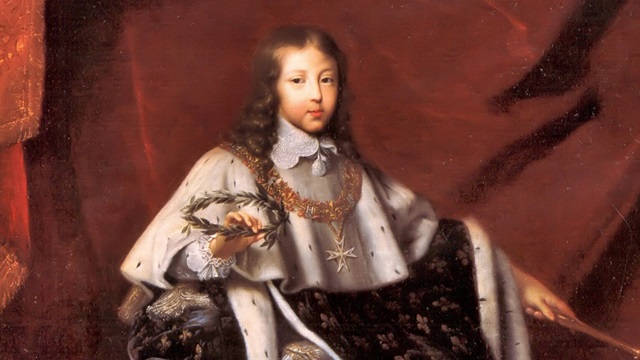
When Mazarin died in March 1661 at the age of 58, 22-year-old Louis announced that he would thenceforth rule France alone, without the aid of a chief minister. The king promptly set about reforming his government. One of his first acts as monarch was to accuse and convict Nicolas Fouquet, his Superintendent of Finances, of embezzlement, and have him imprisoned for life in the northern Italian fortress of Pignerol. He replaced Fouquet with his trusted servant Jean-Baptiste Colbert, who had convinced him of Fouquet’s complicity in France’s mounting debt crisis.

Viewers may remember Nicolas Fouquet from my article on Season 7, Episode 8 of The Curse of Oak Island. A letter, written to Fouquet by his brother, an Abbe and future bishop from southern France, on April 17th, 1656, suggests that the painter Nicolas Poussin may have been privy to some important secret. When translated from French to English, a portion of this letter reads:
“I have delivered to M. Poussin the letter which you have done him the honour of writing to him; he has read it with all imaginable joy. You would not believe, Monsieur, either the pains he takes for your service, the affection with which he takes them, or the merit and probity he brings in all things.
“He and I have planned certain things, of which I shall be able to talk to you in depth, which will give you by M. Poussin advantages (if you do not wish to despise them) that Kings would have great difficulty in drawing from him, and that after him perhaps no one in the world will ever recover in the centuries to come; and what is more, this could be done without much expense and could even turn to profit, and these are things so hard to discover that no one, no matter who, upon this earth today could have better fortune or perhaps equal…”

As mentioned in my earlier video, this cryptic letter is double intriguing in light of certain events which succeeded it. In the early autumn of 1661, about half a year after the death of Cardinal Mazarin, Nicolas Fouquet was arrested by the Captain of the King’s Musketeers and charged with embezzlement. After a three-year-long trial, Fouquet was convicted and sent into exile. King Louis XIV, perhaps displeased with the lightness of Fouquet’s sentence, “commuted” his former minister’s sentence to imprisonment for life. The ex-finance minister spent the rest of his days locked away in the Fortress of Pignerol, his only human contact for many years being his jailer, Benigne Dauvergne de Saint-Mars, and his valet. Interestingly, whenever Fouquet’s regular valet was indisposed, he was substituted by the so-called “Man in the Iron Mask,” a mysterious unidentified prisoner who was otherwise held in solitary confinement and forced at all times to wear a mask of either iron or velvet.

Following his dismissal of Nicolas Fouquet, the French king resumed his governmental policy reforms. In a radical move common to most rulers accorded the epithet “the Great”, Louis XIV resolved to relocate his royal residence and the seat of his government. Having grown resentful of Paris and its aristocracy, Louis determined to leave the historic French capital and establish a new home in Versailles, a country village located about twenty kilometers south of Paris, in which his father had owned a hunting lodge. In order to convert his father’s property into a palace befitting the King of France, Louis XIV hired architect Louis Le Vau, landscape architect Andre Le Notre, and painter Charles Le Brun to expand the old chateau and its gardens. Interestingly, Le Vau, Le Notre, and Le Brun had just worked together to renovate the Vaux-le-Vicompte, the chateau of the freshly-disgraced Nicolas Fouquet, at whose lavish housewarming party King Louis XIV allegedly became convinced that the Superintendent of Finances was indeed embezzling royal funds.

From 1661 to 1668, the king’s three chief architects carried out the first of four expansion projects which would transform Louis XIII’s old hunting lodge into the most magnificent palace in the history of the Western world. In time, Le Vau would add two new stone wings to the original chateau, and later three more which would envelop it. Le Notre would expand the lodge’s original formal gardens into the spectacular Gardens of Versailles, complete with statues, fountains, flower beds, orchards, and the great cross-shaped Grand Canal. Le Brun- who, incidentally, was the long-time apprentice of Nicolas Poussin- would oversee the decoration of the palace’s interior, including its iconic Hall or Mirrors. And French architect Jules Hardouin-Mansart, a later conscript in the growing army of professionals who laboured to realize the king’s dream, would design the Grand Stables and the King’s Apartment. Solar-inspired designs and images evocative of Apollo, the sun god of Classical Greek mythology, were incorporated into the palace’s interior and exterior design, Louis XIV having adopted the sun as his personal symbol and styled himself the “Sun King”.

In 1682, in the midst of the palace’s third expansion project, the Sun King would officially move the French court to Versailles, stipulating that each of his nobles spend a certain amount of time there each year. Louis reasoned that, by keeping his enemies close, he could prevent them from conspiring against the absolute monarchy he and his mother had so painstakingly established. In a further effort to effect this end, the king would develop an elaborate series of daily rituals which his courtiers would be obliged to perform during their stay, effectively keeping his guests occupied and thus depriving them of the opportunity to engage in treasonous conversation with each other while at Versailles.
In 1666, during the first flurry of construction at Versailles, Louis XIV’s First Minister of State, Jean-Baptiste Colbert, founded what would become the French Academy of Sciences, a learned society dedicated to scientific research and discovery in service of the French Crown. In addition to its first secretary, Abbe Jean-Baptiste du Hamel, the Academy’s first members included French mathematician Pierre de Carcavi, Dutch inventor Christiaan Huygens, and Italian astronomer Giovanni Domenico Cassini.

Huygens and Cassini’s early involvement in the French Academy of Sciences is particularly interesting when considered in the context of Mol and Morford’s implicit theory. Back in 1656, Christiaan Huygens had invented the world’s first pendulum clock. In 1673, under Colbert’s sponsorship, he attempted, albeit without success, to create the very first marine chronometer, a clock able to function in the unsteady pilothouse of a seagoing ship, which would enable sailors to accurately determine their longitude on the ocean.

Giovanni Cassini, on the other hand is perhaps best known for his work on the Cassini map, the first truly accurate topographic map of France which he, his son, and his grandson created throughout the 1600s through the use of a surveying technique called triangulation.

In 1666, the year of the Academy’s founding, the society’s founding members proposed the construction of the Paris Observatory, the oldest of its kind still in use today. King Louis XIV sanctioned the project, and the Observatory was constructed in 1667. That year, on Midsummer’s Day, before construction of the Observatory commenced, members of the French Academy of Sciences personally outlined the building’s foundation in a vacant Parisian plot. This plot was carefully chosen, as it was bisected by the Paris meridian, a line of longitude which French cartographers, for the next two centuries, would use as their Prime Meridian (the imaginary line separating the eastern half of the world from its western counterpart, from which all points of latitude were reckoned). When construction of the Paris Observatory was finally completed in 1672, the Paris meridian was inlaid in brass across its stone floor.

The question regarding the period in history at which surveyors possessed the technology necessary to accomplish the feat suggested by Mol and Morford hinges upon historical advancements in longitudinal calculations. Although sailors have been able to accurately calculate longitude for centuries through the use of solar charts, longitude was traditionally calculated through the often-inaccurate process of dead reckoning. Difficulties in measuring latitude posed such a problem that several European kingdoms, throughout the Age of Discovery, offered substantial rewards to any scientists who could invent an accurate method of determining longitude, especially while at sea. Habsburg Spain was the first kingdom to offer such a reward in 1567. The Dutch Republic followed suit in the early 1600s. In 1675, three years after the completion of the Paris Observatory, King Charles II of Great Britain sanctioned the construction of the Greenwich Observatory in England for the express purpose of finding out “the so much desired longitude of places for the perfecting of the art of navigation”. With its role in the construction of the Paris Observatory, the first of its kind in modern European history, and with both Christiaan Huygens, the inventor of the first marine chronometer, and Giovanni Cassini, the creator of the first accurate map of France, being among its founding members, the French Academy of Sciences was clearly at the forefront of the quest to resolve this most important issue of 17th Century European science.
Although 17th Century French navigational scientists under the patronage of Louis XIV were certainly preeminent among their European counterparts, the question of whether they or any of their successors had the capacity of building Nolan’s Cross so that it aligned perfectly with the Royal Way of Versailles is a matter of debate. Dag Pike, for one, doesn’t think they did. In private correspondence with this author, Mr. Pike wrote, “As for the time when techniques might have been capable of such a measuring, I would suggest perhaps within the last 50 years, when position fixing accuracy was improving.” Whatever the case, the alignment of Nolan’s Cross with the Royal Way of Versailles is truly uncanny, adding another facet to the ever-evolving mystery that is Oak Island.
Thanks for Reading!
Thanks for reading! If you enjoyed this article and would like to help support this website, please check out our online bookstore:








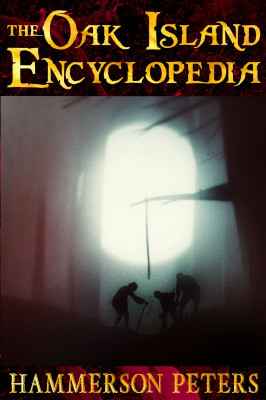














Leave a Reply